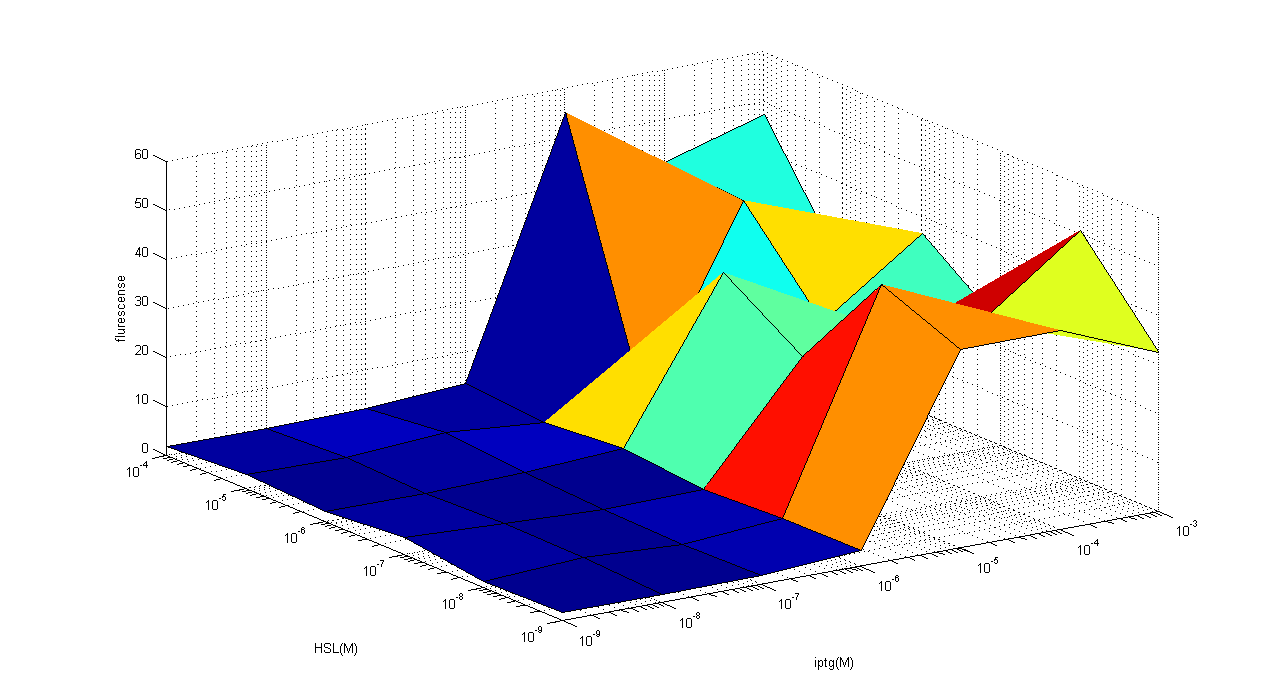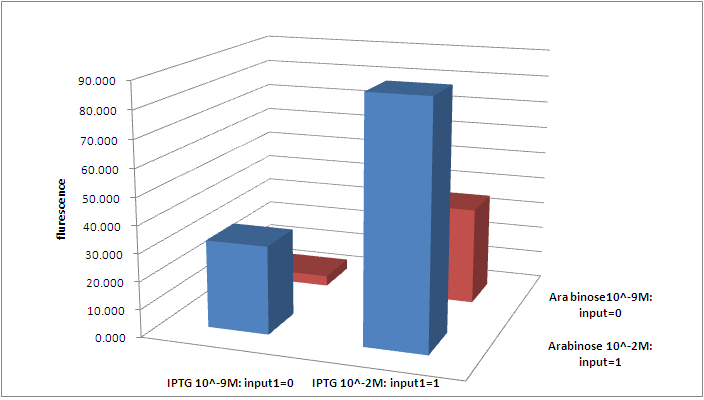Team:PKU Beijing/Project/AND Gate 1/AND Gate Result
From 2009.igem.org
| Line 10: | Line 10: | ||
<partinfo>BBa_K228119 SequenceAndFeatures</partinfo> | <partinfo>BBa_K228119 SequenceAndFeatures</partinfo> | ||
<br> | <br> | ||
| - | This | + | This AND gate family is the earliest construction by us, and it made us much more confident about other AND Gates which were under construction at that time. |
| - | This AND | + | This AND Gate family contains nine AND gates distinguished by the RBS of the T7ptag gene. They are <partinfo>BBa_K228119</partinfo>, <partinfo>BBa_K228120</partinfo>, <partinfo>BBa_K228121</partinfo>, <partinfo>BBa_K228122</partinfo>, <partinfo>BBa_K228123</partinfo>, <partinfo>BBa_K228124</partinfo>, <partinfo>BBa_K228125</partinfo>, <partinfo>BBa_K228126</partinfo>, and <partinfo>BBa_K228127</partinfo>. And these AND Gates are on the plasmid pSB4K5. |
| - | In order to test the function of these AND gates, Shan Shen | + | In order to test the function of these AND gates, Shan Shen constructed a reporter GFP under the control of a T7 promoter.(<partinfo>BBa_K228099</partinfo>). And the reporter is on the plasmid <partinfo>BBa_J61002</partinfo>. |
| - | + | The two plasmids are sequentially transformed to ''E.coli'', a gradient of HSL and a gradient of IPTG is combined to test the behavior of the AND Gate under different combination of HSL and IPTG concentration. The result is read by a microplate reader. Data are processed and ploted using Matlab. (Fig 1, 2, 3 and 4. For more detail, refer to our [[Team:PKU_Beijing/Notebook/Protocol/Chemical_Inducible_GFP|protocol]]) | |
[[Image:PKU_SS_1J.png|600px|center|thumb|Fig1. GFP expression of AND gate, K228125: lux-SupD-lac-T7ptag (rbs: J44001). The data are showed for (left to right): 1×10^-9, 1×10^-8, 1×10^-7, 1×10^-6, 1×10^-5 1×10^-4 and 1×10^-3M IPTG, and (bottom to top) 1×10^-9, 1×10^-8, 1×10^-7, 1×10^-6, 1×10^-5 and 1×10^-4M HSL.]] | [[Image:PKU_SS_1J.png|600px|center|thumb|Fig1. GFP expression of AND gate, K228125: lux-SupD-lac-T7ptag (rbs: J44001). The data are showed for (left to right): 1×10^-9, 1×10^-8, 1×10^-7, 1×10^-6, 1×10^-5 1×10^-4 and 1×10^-3M IPTG, and (bottom to top) 1×10^-9, 1×10^-8, 1×10^-7, 1×10^-6, 1×10^-5 and 1×10^-4M HSL.]] | ||
| Line 28: | Line 28: | ||
Discussion: | Discussion: | ||
| - | From the result of some of these AND gates, we found that | + | From the result of some of these AND gates, we found that most of these AND Gates are inducible by IPTG, but independent of the concentration of HSL. It indicates that the leakage of HSL sensor is significant, and the basal expression of SupD is so high that without HSL there is sufficient SupD to work on T7ptag. This result is consistent with the induction curve of HSL sensor.(there are quite amount of expression without HSL induction.)for more details, refer to [[Team:PKU_Beijing/Project/AND_Gate_1/Inducible_System_Result|Sensor Result]]. |
| - | + | Possible improvements: | |
| - | Because the leakage is on the SupD side, we can not modulate the RBS (there is no RBS on SupD side) to | + | Because the leakage is on the SupD side, we can not modulate the RBS (there is no RBS on SupD side) to make a qualified AND gate. If the leakage is on the T7ptag side, we may get some good results after modulate its RBS (change RBS or mutate it). The best solution is to replace the HSL sensor with other better promoters. Actually we got some better results by doing this. They are Given below. |
The result of other five AND gates are not shown here. | The result of other five AND gates are not shown here. | ||
Revision as of 07:07, 20 October 2009
|
|||||||||||||
|
|||||||||||||
 "
"








